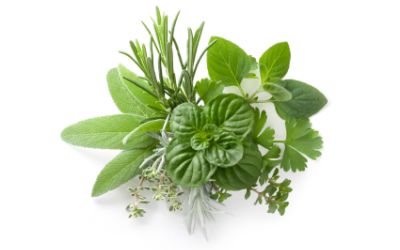May 1, 2012

A field is a location, a place where things connect. High mountain meadows, rich desert expanses and coral reefs all exhibit the interplay of simple forces, such as sunlight, altitude, climate and nutrients that create and maintain them.
In the same way, fields of knowledge arise from core underlying principles. Botanical materials can be understood using a framework of signposts, not built with wooden two by fours," with a virtual three by three." Three signpostseach composed of three boxesare the touchstones.
What is the Material?
The first signpost asks if you are dealing with 1) crude raw (unprocessed) herb, 2) an herbal ingredient, or 3) a finished product. Crude raw herbs are the result of cultivation or wild collection that has been dried to stabilize them for shipment. They result from the implementation of good agricultural and collection practices and are the material that then becomes the subject of GMPs (good manufacturing practices), which deal with herbal ingredients.
The second box of this first signpost, the herbal ingredient, can be the crude raw herb, but is more often a powdered herb or extract. This is most often what manufacturers purchase from suppliers in order to manufacture finished products.
The third box is the finished product, which completes an understanding of first signpost required to determine the stage of processing of the herbal material.
Degree of Ingredient Purification
The second signpost, the degree of purification of an herbal ingredient, applies to herbal extracts, which can again be separated into three boxes, which are what I call crude extracts, semi-purified extracts and compound-focused extracts.
Crude extracts have only altered the form of the material so that the extract contains as much of what was in the crude raw herb as possible. Good examples are known as fluid extracts, and descriptions of them can be found in old pharmacopoeias. A fluid extract is prepared so that one milliliter of the finished extract contains the medicinal properties found in one gram of the dried herb from which it was madeonly its form is changed.
In semi-purified extracts, only part of the herb is represented. The lipid and sterol fraction of saw palmetto berries is one example, as is a kava extract with kavalactones concentrated above levels of what is found in kava root and rhizome relative to a crude kava extract. So-called 24/6 ginkgo leaf extracts are another example of a semi-purified extract. Semi-purified extracts focus on classes of compounds, but are still chemically complex materials. This box represents a middle ground between crude extracts and purified materials. Semi-purified extracts are still appropriately represented as a type of extract of the original material.
Compound-focused extracts may not be extracts at all and can be more appropriately described as materials extracted from a particular botanical source, which becomes largely irrelevant.
When a high degree of purification is achieved, the botanical origin serves only as a repository of the class of constituents present or even single purified chemicals. A highly purified sample of catechins from green tea, for example, isnt really an extract of green tea anymore, nor is pure curcumin an extract of turmeric. There is no hard and fast rule here, and some European thinking suggests that when the degree of purification to active constituents reaches 70 percent or greater, the preparations should be individually considered to determine if they are a total extract" or a refined extract."
Potency
Potency, the relationship between an identified constituent and the biological activity of the herb or extract in which it is found, also has three boxes: 1) the identified constituent fully accounts for the biological activity of the extract, 2) the identified constituent partly accounts for the potency of the extract, or 3) the identified constituent has no relationship with the activity of the extract.
The stimulating effects of guaraná (Paullinia cupana) pods and the laxative effects of senna (Senna alexandrina) pods are due to the respective levels of caffeine and sennosides they contain. Change those levels, and the magnitude of bioactivity changes accordingly. Extracts of this nature can be standardized based on the levels of these bioactive constituents.
The bark or bark extracts of white willow (Salix alba) may state a percent salicin concentration, but gets placed into box number two because salicin accounts for some, but not all, of the pain-relieving properties of the bark. Such identified constituents are considered co-actives and, because they do not account for the total bioactivity of the plant part or its extract, the material itself with all its constituents must be considered as the active substance. Manipulating the levels of a co-active can throw off the integrity of the extract containing them.
In the case of St. Johns wort (Hypericum perforatum) tops, the concentration of hypericins is no longer believed to have an effect on the bioactivity of St. Johns wort extracts. That puts it into box number three because hypericins content is simply a marker that may be of use as an in-process control during manufacturing operations, but it says little, if anything, about the expected potency of the extract.
Such is the complex nature of herbal materials. In most cases no single constituent will explain the bioactivity of an extract. The extract itself is the active material that must standardized, not just the level of any particular constituent it contains.
To knowledgeably deal with botanical materials, it is important to know if you are talking about a crude raw material, an ingredient or a finished product. Paying attention to the degree of purification of extracts should help you understand if you are dealing with an extract of x, or x extracted from something. And finally, consider the relationship between an identified constituent (or class of constituents), and the bioactivity of the material containing it. This "three by three" method can help one better understand both botanical materials and finished botanical products.
Steven Dentali, Ph.D., is chief science officer at the American Herbal Products Association (AHPA). He is a United States Pharmacopoeia Convention Delegate and a member of the USP Standards Expert Committee: Nomenclature, Safety, and Labeling. He is also Editorial Board Chair of AOAC and Secretary of the AOAC Presidential Task Force on Dietary Supplements.
Botanical Congress
Attend the inaugural AHPA Botanical Congress at SupplySide MarketPlace on Tuesday, May 8, at Javits Center in New York to hear more about using botanicals in personal care, dietary supplements or foods. This full-day, executive-level educational symposium focuses on the business of herbs and botanicals from plant to consumer, and includes presentations from and an opportunity to network with a renowned faculty with extensive experience in their respective areas of expertise, including regulatory officials from FDA, FTC and USDA. Register at supplysideshow.com.
About the Author(s)
You May Also Like




.png?width=800&auto=webp&quality=80&disable=upscale)